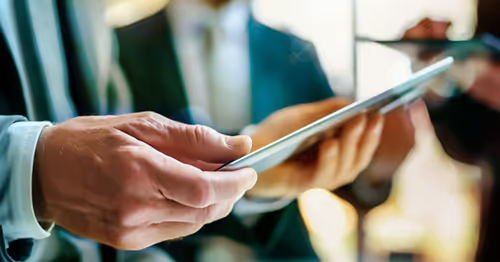

Digital Forensics
Locate and Analyze Key Evidence in Complex Data Environments
Data complexity within the enterprise requires specialized expertise when it comes to defensibility and chain of custody.
Lighthouse digital forensics experts' diverse professional backgrounds and industry-recognized certifications bring unparalleled experience to our data preservation, collection, and analysis services.
Digital Forensics Engagements for Large Corporate Clients
Digital Forensics Engagements for National & Multinational Law Firms
Years of Collective Forensics Experience on Our Team
Right-Fit Data Collection
No matter your system setup, resource constraints, or compressed timelines, Lighthouse forensic data experts have a method and the means to get to key data.
Defensible Processes
Modern data introduces complexities that require specialized expertise and technologies for defensible collection.
Any Data from Anywhere
Years of experience in data collection, evidence management, forensic analysis, and legal precedent ensure a complete collection.
Let Lighthouse Identify, Preserve, and Collect All the Data You Need
Need the Investigative Power of Digital Forensics?
Secure IP Services
Protect Against Intellectual Property Theft by Exiting Employees
Our forensic experts evaluate the digital behavior of transitioning employees to identify anomalous data movement and deliver actionable findings.



Lighthouse Secure IP On-Demand Services Prevent Proprietary Data Theft by Exiting Employee
Case Study: Examiner Catches Attempted IP Theft via Flash Drives
- A Fortune 10 company that was developing leading-edge technology in a highly competitive market was losing employees to poaching.
- HR was concerned that trade secrets were going to competitors along with those employees.
- Lighthouse implemented proactive risk identification and reporting for all exiting employees.
Find out what happened when an exiting employee loaded trade secrets onto thumb drives.
Forensic Analysis
Illuminate Evidence with Forensic Analysis
Our forensic analysts collaborate with your legal experts to strengthen your case, searching beyond the data to artifacts including user logs, deleted files, and metadata. We use this crucial evidence to:
- Identify behavior of data custodians
- Build event timelines and communication maps
- Create a digital audit trail




Automated Legal Hold
Reduce Errors and Maximize Efficiency with End-to-End Legal Hold Automation
Our Digital Forensics and Information Governance teams help you replace error-prone manual legal hold management with automated processes to prevent spoliation and deliver better outcomes.
Expert Witnesses
Get Authoritative Support for Your Data-Related Claims
Trust the Lighthouse forensics professionals to successfully defend your claims. Whether testifying, sitting for cross-examination, or drafting affidavits, they clearly communicate technical concepts to non-technical audiences to move your case forward.
Matters Have Benefited from Lighthouse Technical Testimony Since 2020



FAQs
What is digital forensics?
According to the Sedona Conference definition, it is “the scientific examination and analysis of data held on, or retrieved from, a computer in such a way that the information can be used as evidence in a court of law. It may include the secure collection of computer data; the examination of suspect data to determine details such as origin and content; the presentation of computer-based information to courts of law; and the application of a country’s laws to computer practice. Forensics may involve recreating deleted or missing files from hard drives, validating dates and logged-in authors/editors of documents, and certifying key elements of documents and/or hardware for legal purposes.” Forensics also uses repeatable, defensible, highly-controlled methods to conduct preservation, collection, and analysis—preserving chain of custody and reducing spoliation risk.
When do companies typically need forensic services?
Companies typically need digital forensics services when facing internal investigations, litigation, regulatory compliance matters, or suspected security breaches.
How do you ensure the defensibility of digital evidence collected during forensic investigations?
Many practitioners focus on following strict protocols and industry-standard processes to maintain integrity of evidence. The can involve extensive chain of custody documentation, generating has values to verify data authenticity, and forensic imaging.

Get in Touch
Fill out the form to contact our Digital Forensics team.





